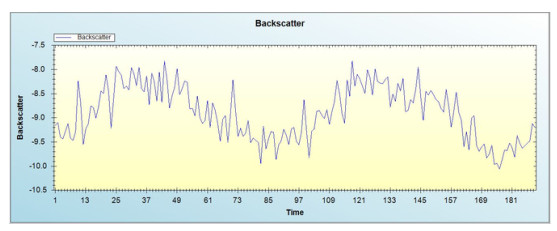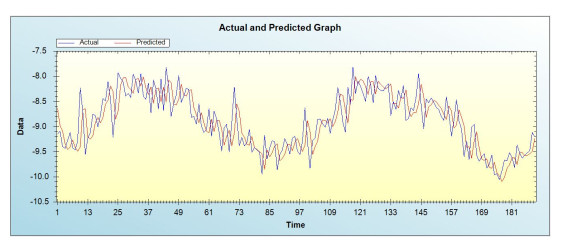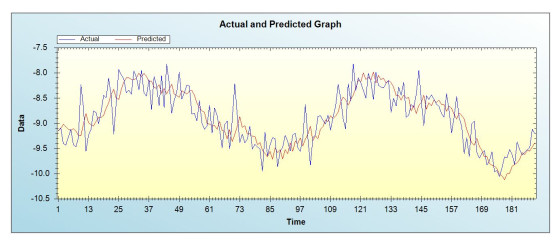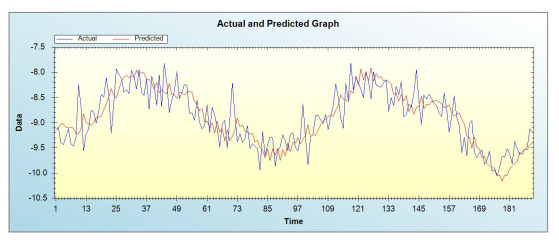| Citation: | Khadar Babu SK, Christophe Chesneau, Victor Anthonysamy, Suganya Ravichandaran, Shakila Chella Vasan. EFFICACY OF THE RICE CROP GROWTH USING DIFFERENT SMOOTHING METHODS[J]. Journal of Applied Analysis & Computation, 2022, 12(6): 2593-2599. doi: 10.11948/20220116 |
EFFICACY OF THE RICE CROP GROWTH USING DIFFERENT SMOOTHING METHODS
-
Abstract
Rice is one of India's most important food crops. The government of India has a major duty in agriculture: perfect mapping and continual monitoring of paddy rice fields. Rice growth has a major impact on SCATSAT-1 backscatter images, and rice fields have been successfully mapped using a time-series analysis employing satellite data. SCATSAT-1 time-series data was used to detect single-cropped, double-cropped, and triple-cropped rice fields (1 to 3 harvests per year) and identify different phonological stages using a crop phenology-based categorization. The usefulness of rice crop growth utilizing exponential smoothing approaches to estimate and forecast yield growth is demonstrated in this paper. The Holt linear trend, Holt-Winters methods (additive and multiplicative), and Mean Absolute Error (MAE), Sum Squared Error (SSE), Mean Squared Error (MSE), Mean Percentile Error (MPE), and Mean Absolute Percentage Error (MAPE) are used as error factors to choose the best forecasting methods among the exponential smoothing techniques.
-
Keywords:
- Exponential smoothing /
- Holt-Winters methods /
- backscatter values /
- double-cropped
-

-
References
[1] G. L. Denning and T. X. Vo, Vietnam and irri: a partnership in rice research: proceedings of a conference held in hanoi, vietnam, 4-7 may 1994., Manila, Philippines; Hanoi, Vietnam: International Rice Research Institute; Ministry of Agriculture and Food Industry., 1995. [2] S. Devienne, Red river delta: fifty years of change, Moussons. Recherche en sciences humaines sur l'Asie du Sud-Est, 2006, 9(10), 255-280. [3] C. W. J. Granger and P. Newbold, Forecasting Economic Time Series, Academic Press, USA, 1986. [4] C. Holt, Forecasting seasonals and trends by exponential weighted moving average, International Journal of Forecasting, 2004, 20(1), 5-10. doi: 10.1016/j.ijforecast.2003.09.015 [5] R. J. Hyndman, B. Anne, J. Koehler and O. Keith, Forecasting with exponential smoothing: the state space approach, 2008. [6] P. Kumari, G. Mishra, A. K. Pant and G. Shukla, Comparison of forecasting ability of different statistical models for productivity of rice (oryza sativa l. ) in india, The Ecoscan, 2014, 8(3), 193-198. [7] S. Makridakis and M. Hibbon, Accuracy of forecasting: An empirical investigation, Journal of the Royal Statistical Society: Series A (General), 1979, 142(2), 97-125. doi: 10.2307/2345077 [8] S. Nguyen-Thanh, C. Chi-Farn, C. Cheng-Ru and G. Horng-Yuh, Classification of multitemporal sentinel-2 data for field-level monitoring of rice cropping practices in taiwan, Advances in Space Research, 2020, 65(8), 1910-1921. doi: 10.1016/j.asr.2020.01.028 [9] S. Oza, S. Panigrahy and J. S. Parihar, Concurrent use of active and passive microwave remote sensing data for monitoring of rice crop, International Journal of Applied Earth Observation and Geoinformation, 2008, 10(3), 296-304. doi: 10.1016/j.jag.2007.12.002 [10] M. Palakuru, S. Adamala and H. B. Bachina, Spatial mapping of rice crop evapotranspiration in godavari command area, Indian Journal of Ecology, 2020, 47(2), 361-364. [11] M. Palakuru, K. Yarrakula, N. R. Chaube and S. K. Khadar Babu, Identification of paddy crop phenological parameters using dual polarized scatsat-1 (isro, india) scatterometer data, Environmental Science and Pollution Research, 2019, 26(2), 1565-1575. doi: 10.1007/s11356-018-3692-5 [12] A. Pankratz, Forecasting with univariate box Jenkins models concept and cases, J. Wiley and sons, New York, 2009. [13] S. Park, J. Im, C. Yoo and H. Han, Classification and mapping of paddy rice by combining landsat and sar time series data, Remote Sensing, 2018, 10(3), 447-456. doi: 10.3390/rs10030447 [14] H. P. Phung, L. D. Nguyen, N. V. A. Vu and N. K. Thanh, Application of multi-temporal sentinel-1 sar data for yield estimation of rice crops in a giang, vietnam, IOP Conf. Series: Earth and Environmental Science, 2022, 964(1), 1-9. [15] T. T. Son, U. Singh, J. Padilla and R. Buresh, Management of urea on degraded soils of the red river delta[vietnam]: effect of growing season and cultural practice., in Conference on Viet Nam and IRRI Partnership in Rice Research. Hanoi (Viet Nam). 4-7 May 1994., 1995. [16] D. Subhankar, A. Sirisha and P. Mahesh, An overview of indian traditional irrigation systems for sustainable agricultural practices, International Journal of Modern Agriculture, 2020, 9(4), 12-22. [17] P. R. Winter, Forecasting sles by exponentially weighted moving averages, Management Science, 1960, 6(3), 324-342. -
-
- Figure 1. Time plot of rice double cropped data in 2019
- Figure 2. Forecasting time series plot of Holt linear model
- Figure 3. Forecasting time series plot of Holt-Winters multiplicative model
- Figure 4. Forecasting time series plot of Holt-Winters additive model





 DownLoad:
DownLoad:


